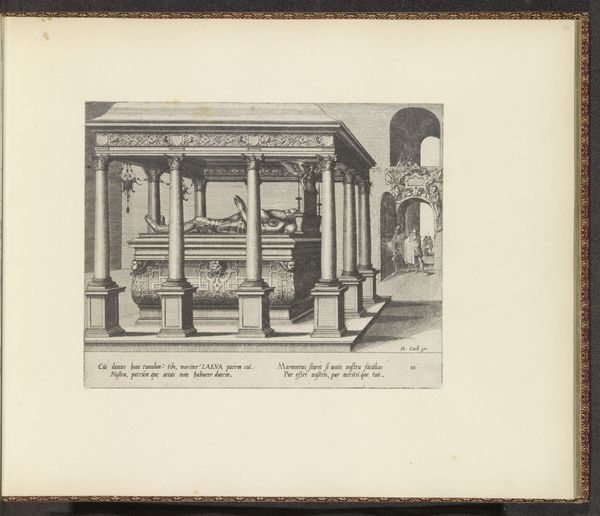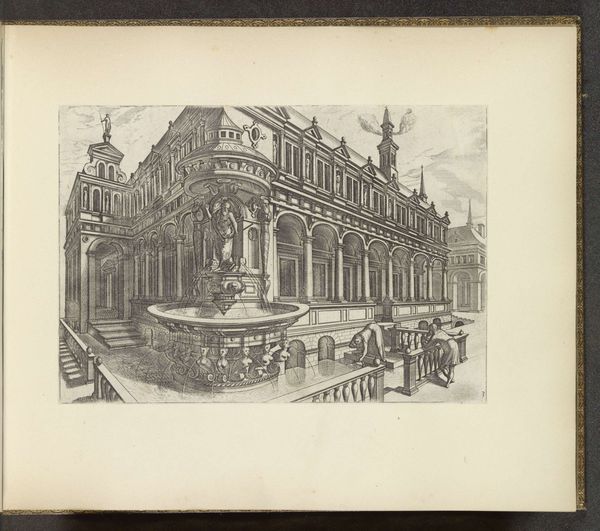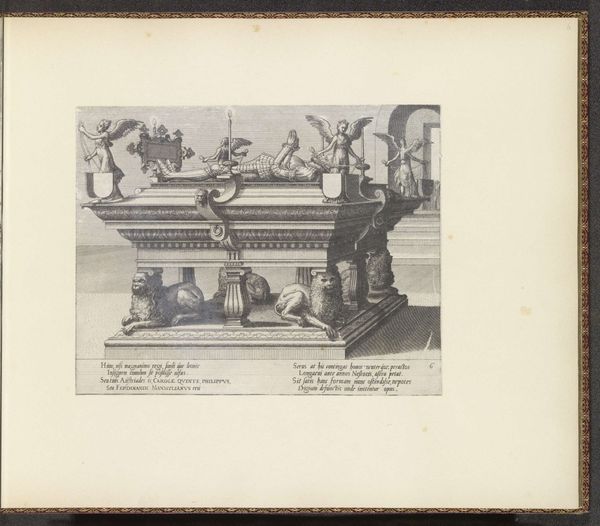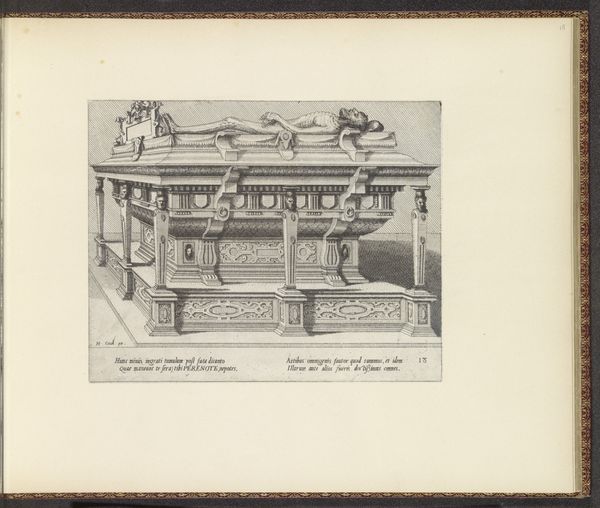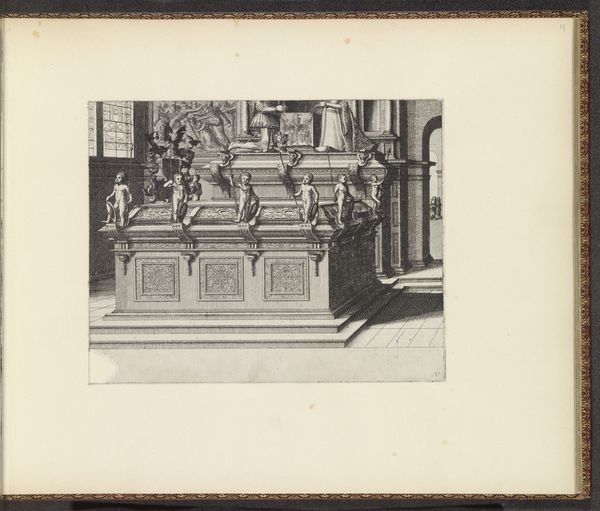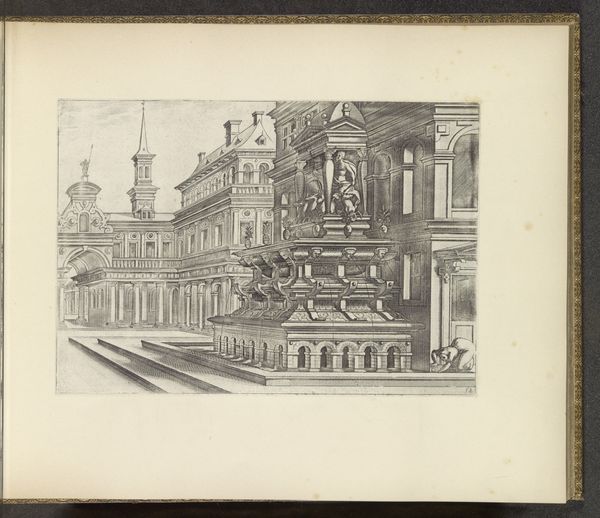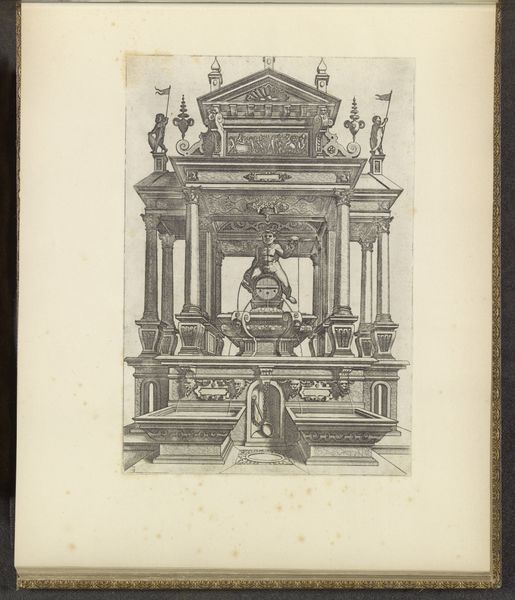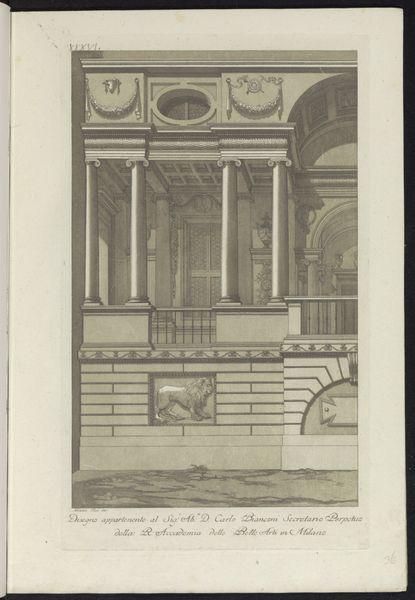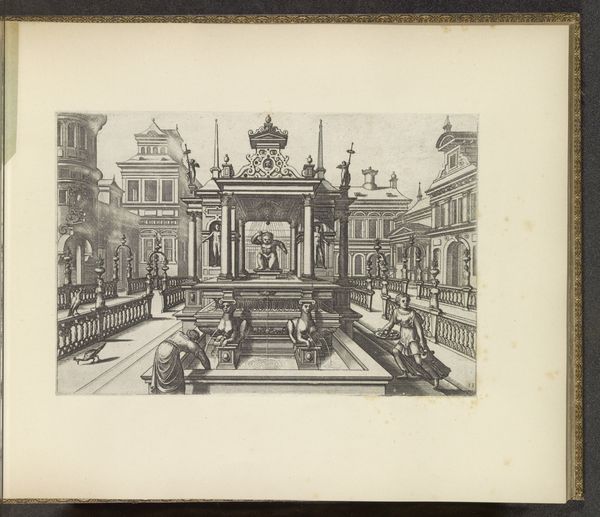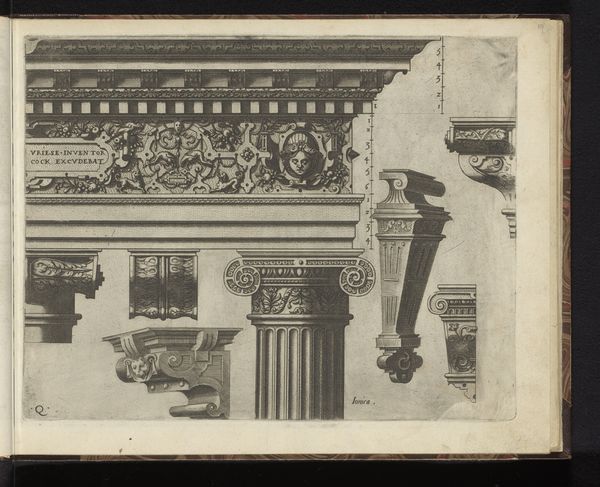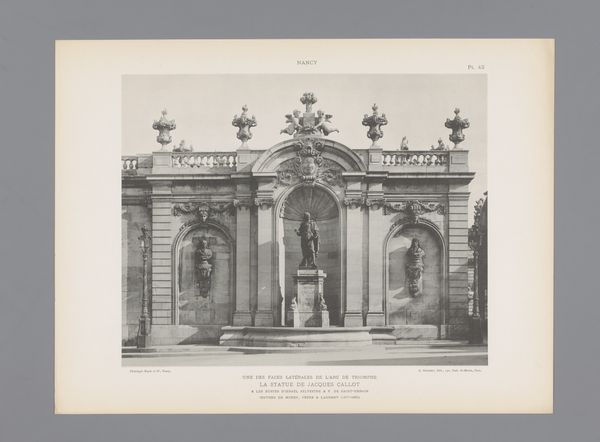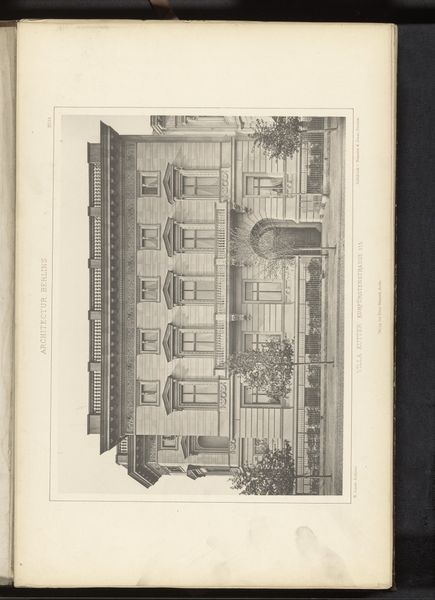
Vrijstaand grafmonument voor een man, met hoog voetstuk 1563
0:00
0:00
johannesoflucasvandoetechum
Rijksmuseum
print, intaglio, engraving, architecture
# print
#
intaglio
#
form
#
line
#
history-painting
#
northern-renaissance
#
engraving
#
architecture
Dimensions: height 167 mm, width 210 mm
Copyright: Rijks Museum: Open Domain
This is an undated print of a freestanding grave monument for a man, created by Johannes or Lucas van Doetechum. The elevated tomb suggests a figure of high status, and would have been commissioned by the family of the deceased. In early modern Europe, death and commemoration rituals were deeply intertwined with social status and religious beliefs. Monuments like this served as powerful symbols of wealth, lineage, and the desire for eternal remembrance. The tomb's architecture, adorned with classical motifs and religious iconography, reflects the cultural values of the elite during this era. Representations of death often served as moral lessons, reminding viewers of the transience of life and the importance of piety. Consider the emotional weight such a monument carried for both the family who commissioned it and the wider community. What does it mean to create such a permanent marker of one's existence, and how does it shape the narratives we construct about ourselves and others?
Comments
No comments
Be the first to comment and join the conversation on the ultimate creative platform.
